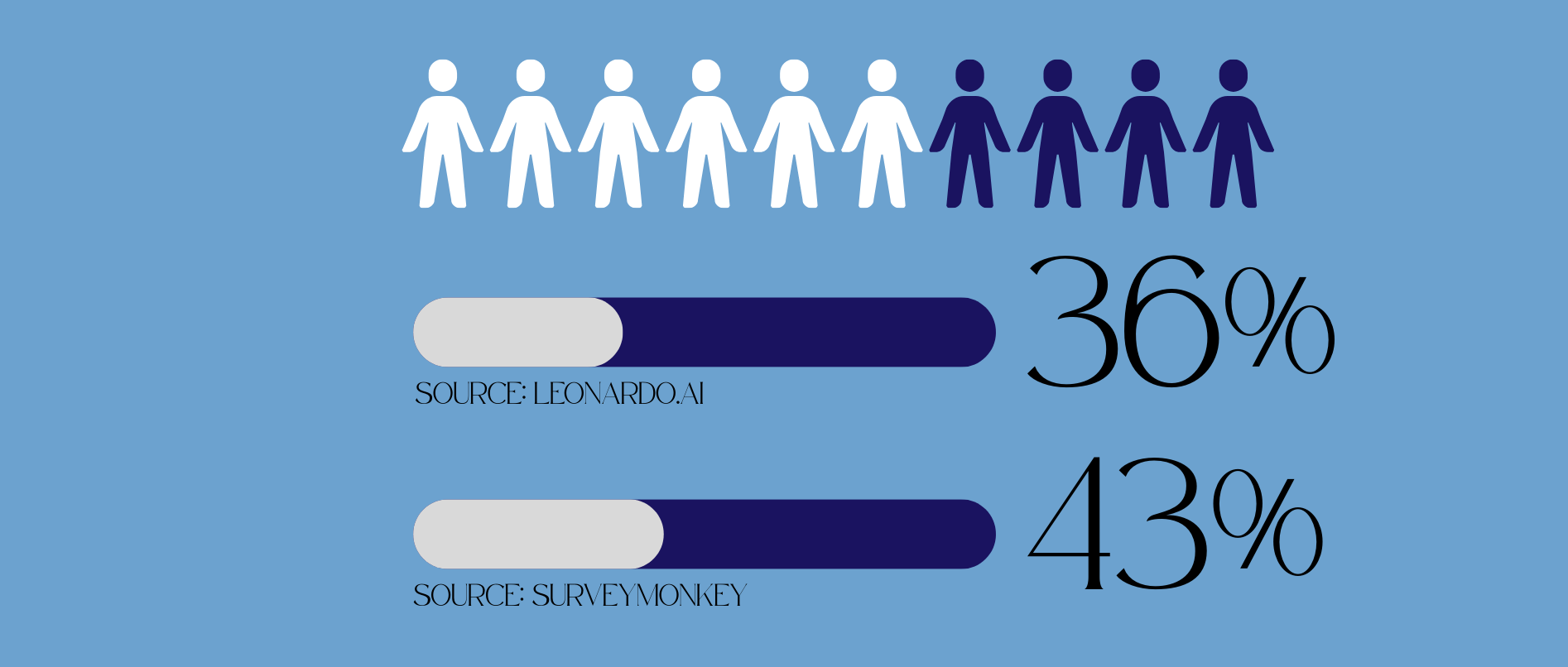The Truth about Working with AI in Marketing
April 1, 2025
Since ChatGPT entered our lives, it has become our best friend, therapist, colleague, personal assistant, and, for many of us, also our primary search engine. When marketers think about search engines, they often focus on optimizing the brand’s visibility, how the content should look, and what factors search engines use to evaluate content or a company.

AI has become an integral part of our daily lives and has changed the way we work. Over time, many myths have emerged, and like office rumors, they often spread quickly and inaccurately.
So, what’s true and what’s not? Here are some of the most common misconceptions about AI in marketing:
Myth: AI will replace content writers
Reality: AI can generate text, but it lacks creativity, opinions, and emotional intelligence. (Ironically, we all know some people who share these characteristics with AI.) Successful marketing requires storytelling, human experience, and strategy—things AI can assist with but not fully replace.
Content writers should leverage it as a tool for research, brainstorming ideas, and optimization.
Here are five common ways AI tools are being used for content writing:
- Improving text quality and SEO factors.
- Creating a target audience persona for content reviews or better understanding.
- Researching topics and the target audience’s “whereabouts.”
- Identifying AI use in a text.
- Adjusting text for different platforms (e.g., transforming a blog post into a LinkedIn post).
Myth: AI can build a successful marketing strategy
Reality: AI can analyze data and show it in a graph, automate campaigns, and suggest optimizations, but a strong marketing strategy requires human insight for data cross-referencing, creativity, and adaptability.
AI can assist with:
- Providing insights and recommendations based on the information gathered or the persona you created.
- Analyzing data according to your requests.
Myth: The right prompt is a magic spell
Reality: Sure, a well-written prompt can help you achieve your goal faster and more efficiently. However, AI relies on patterns and data. The output depends on the quality of the input and will most likely need to be revised and updated each time with new information. But even the best prompt won’t replace critical thinking and expertise.
Tips for creating the best prompt for your marketing task:
- Background information – provide as much context as you can.
- Be specific – define precisely what you want to achieve.
- Identify your target audience – who are you trying to reach?
- Experiment and document – writing the best prompt takes time. Once you have a good version, save it for future use or try different results from other chatbots.
- Length – control the extent of the answer you wish to have (e.g., up to 500 words, a short paragraph, etc.).
Myth: AI tools are too expensive for smaller organizations
Reality: Many AI-powered marketing tools, from chatbots to email automation, voice readers, and data analytics, allow businesses of all sizes to use AI without a massive investment (free or with free trial options). Free and budget-friendly options like ChatGPT, Canva’s AI features, and Google’s AI-powered tools make AI accessible to small businesses.
A moment of truth: Paid AI tools aren’t always perfect. They can still miss some data or require manual work to get the best results.
Read- Useful AI Tools for Marketing in 2025Myth: AI can run the marketing team on its own
Reality: AI could replace some marketing tasks, but not the marketing team. When technological advancements are implemented correctly, they help us replace repetitive, boring tasks so we can focus more on our thinking, creativity, and use our brains.
What tasks were replaced?
- Chatbots for customer service.
- Visuals for content – in the US, 36% of marketers use AI to create social media images.
- Task automation – 43% of marketing professionals said they automated repetitive tasks such as scheduling content, personalization, or A/B testing.

Myth: AI-generated content is always SEO-friendly
Reality: While this subject is heavily debated overall,
AI-generated content can help speed up content creation and positively affect ranking. However, it doesn’t always align with search engine algorithms. Google prioritizes content that is beneficial and liked by others, regardless of how it was created.
That said, content created by AI often lacks creativity, realism, and personal opinions, which can ultimately hurt its engagement and ranking.
Myth: Marketers who don’t use AI at all in their jobs are simply left behind.
Reality: Partially true. Marketers who hesitate to adopt AI tools may face intense competition and tight deadlines for delivering results. However, this is not a dead end—those who delay can still adapt over time, learn to use new technologies, and even take on new roles that emerge from these changes.
The economist David Autor explains in his 2015 research, “Why Are There Still So Many Jobs?” why, despite technological advancements completely changing the work environment, people still have many jobs to choose from. He argues that, yes, in the short term, it can replace certain jobs, but it also creates new roles. So eventually, in the long run, the nature of work shifts, and people adjust.
Today, we look back at old Charlie Chaplin films with nostalgia and admiration. We don’t mourn the jobs that humanity lost to advancing technology. Ultimately,
the labor market adapts to new demands and technological improvements (marketers are usually the first ones to adopt these changes); and while they might be intimidating in the short term, they are not a long-term threat to employment.There is no reason to be scared of AI and its capabilities—only to learn and stay ahead.